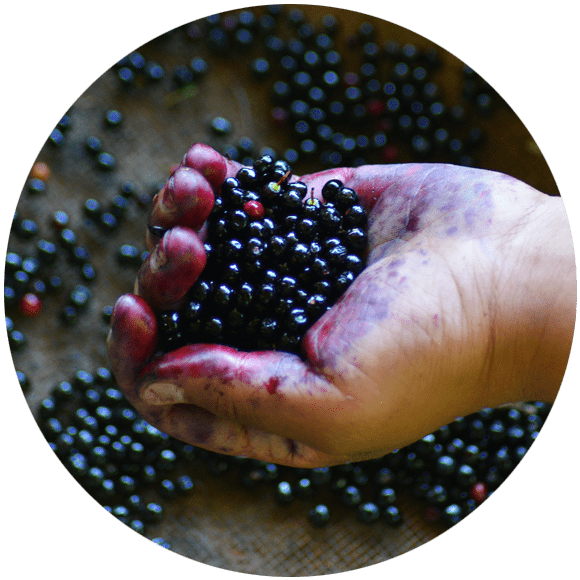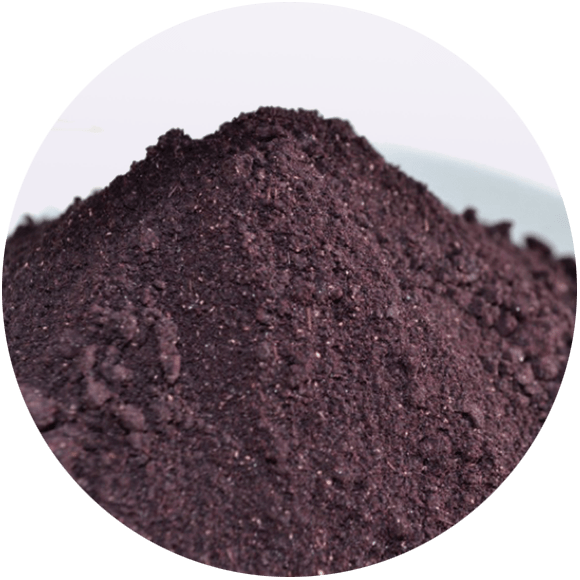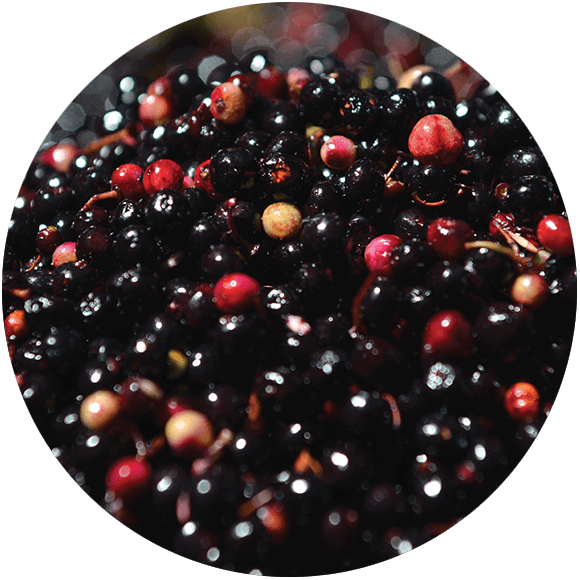MAQUI
WHAT IS IT?
The Maqui berry (Aristotelia chilensis) is a native berry that grows exclusively in the south of Chile, and has been consumed since ancient times by indigenous peoples.
It is an evergreen, dioecious shrub with a divided trunk that reaches up to 4-5 meters in height. It has reddish stems with thin, floppy branches, and its bark is smooth, soft, and easily detached. The leaves are petiolated, ovate-lanceolate, perennials, measuring between 4-9 centimeters, with serrated edges arranged in a cross in relation to the rest of the leaves of the stem.


ORIGIN
The Maqui berry has properties that have been known about for centuries by indigenous peoples who have traditionally lived in the south of Chile and have considered the Maqui berry to be a sacred plant.
The harvest follows century-old ancestral traditions.
COMPOSITION
It is a rich source of anthocyanins, which is the family of compounds that gives the maqui berry its deep, dark purple color, as well as its high antioxidant capacity.
However, these antioxidants that are common in many fruits, such as blueberries and blackberries, do not tell the whole story. There is something unique and special about the maqui berry that differentiates it from other fruits with high antioxidant levels.
This is the fact that it possesses delphinidins, a group of molecules belonging to the anthocyanins. A recent study demonstrates the numerous properties of delphinidins.

Nutritional Composition
Every 100 g of berries contains 150 calories, 0.8 g of protein, 0.8 g of raw fiber, 1.2 g of ash, 87 mg of calcium, 44 mg of phosphorous, 30.5 mg of iron, and 296 mg of potassium. It also contains a considerable percentage of vitamin C and trace elements, primarily Br, Zn, Cl, Co, Vn, Tn, and Mo 18. Ripe maqui leaves can only be distinguished from the younger ones due to their lower content of potassium and higher content of sodium. It is worth pointing out that the contents of magnesium, chlorine, calcium, titanium, and vanadium do not vary between leaves from plants in areas with differing levels of annual rainfall.

